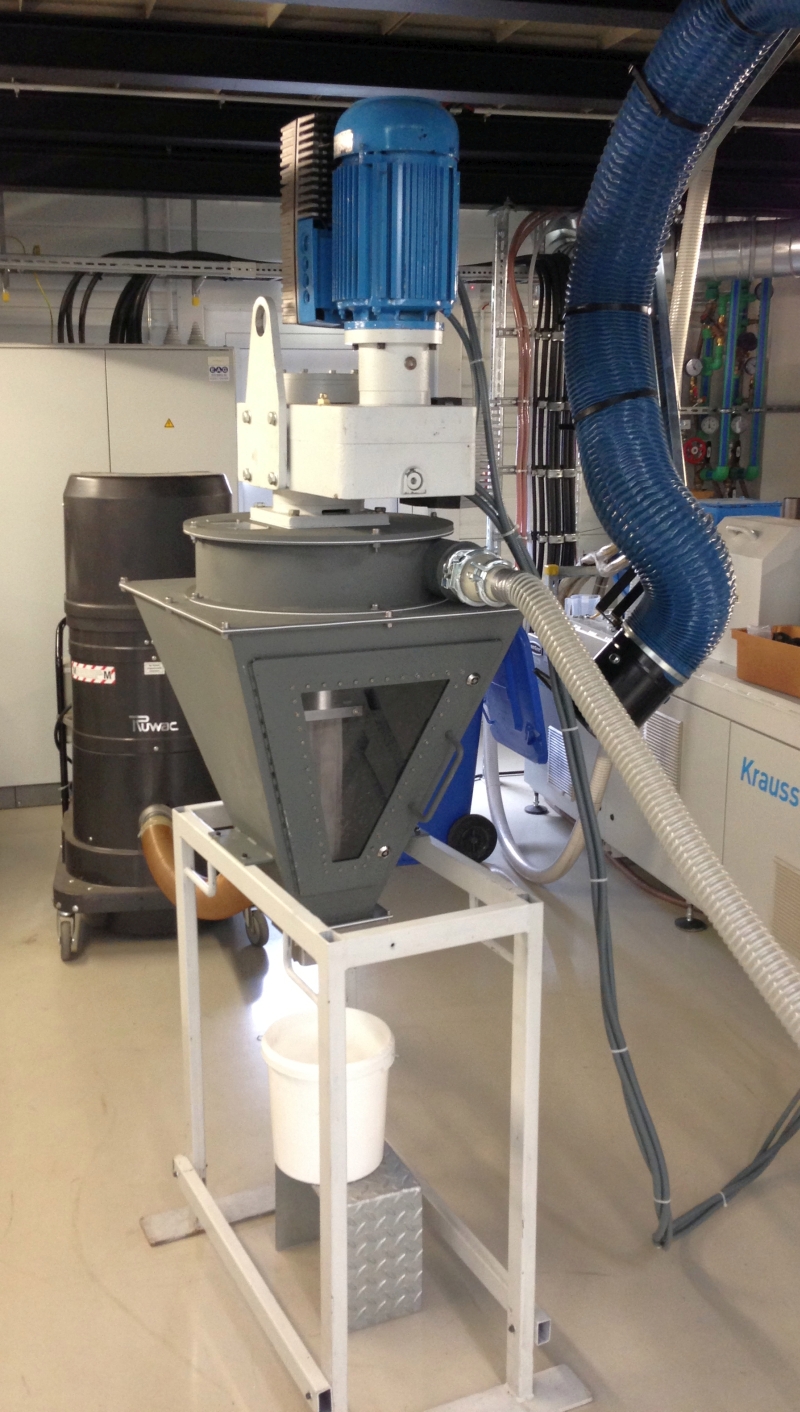From cellulose to molding – Fraunhofer PAZ develops new technology for fiber-reinforced plastics
Cellulose is an attractive material for use in fiber-reinforced plastics, for example, for use in lightweight construction or as a material for transport containers and pallets. However, until now it has not been possible to use standard forms of supplied cellulose for this purpose efficiently. The Fraunhofer Pilot Plant Center for Polymer Synthesis and Processing PAZ now wants to change this situation in a new project: Together with its partners, a technology platform will be developed for the production of high-quality cellulose compounds and their further processing to produce molded parts (moldings).
Fiber reinforced plastics are used, for example, to make instrument panels or side paneling in cars, in the housings of electrical equipment and for garden furniture. Thermoplastics such as polypropylene (PP), polyethylene (PE) and polyamide (PA) are reinforced with fibers to achieve very specific material properties. The fiber content in the material can be up to 40 percent.
Cellulose fibers would be very suitable for this use: They are a renewable raw material and are less expensive than other materials such as glass. In addition, investigations at the Fraunhofer PAZ have shown that, compared to other natural fibers, they have very good mechanical characteristics that make them a possible candidate for plastic reinforcement: If very good, isolated cellulose fibers with long fiber length are used in the injection molding compounding, the resulting materials are just as load bearing as short glass fiber compounds – but with substantial material and cost advantages.
However, using cellulose fibers in this way poses large challenges for the process sequence: Individual fibers with sufficient length must be acquired from standard supply formats such as cartonboard, which can also be measured in exact doses and are flowable, to enable the fiber content and distribution to be precisely determined when added to the plastic melt. Such a process is not yet available.
The Fraunhofer PAZ wants to develop precisely this technology and to do so is working in a new project together with Kurt Seume Spezialmaschinenbau GmbH, Ematik GmbH, Exipnos GmbH and Dornburger Kunststoff-Technik GmbH. The objective of the project, which will be funded for two years within the »growth core potential« program of the Federal Ministry of Education and Research (Bundesministerium für Bildung und Forschnung - BMBF), is to develop a technology platform for the efficient production of high-quality cellulose compounds based on commercially available cellulose supply forms and their processing into moldings by means of conventional injection molding and injection molding compounding.
»Through the know-how of the participating partners, we are able to combine cellulose and plastic technology in a unique, continuous solution. In this way we will make fibrous cellulose industrially usable for plastic reinforcement. Because inline processing, starting from cartonboard and without any other intermediate products, which would worsen the properties and increase the price, is the most efficient processing option«, says Dr. Michael Busch, head of the project at the Fraunhofer PAZ.
The key is a filter stuffing unit developed by Fraunhofer PAZ and for which a patent has been filed: The cartonboard, as the raw material, is first ground so that individual cellulose fibers with sufficient length are produced. These are transported away in a fiber air stream. The filter stuffing unit then separates the fibers from the air and conveys them into the compounder-extruder, where the further processing takes place.
Project manager Busch foresees diverse possible applications for high-quality fibrous cellulose compounds and moldings: »On the one hand, it will be possible to simplify sophisticated design solutions significantly. On the other hand, glass fiber reinforced plastics could be partly replaced by cellular fiber reinforced plastics, which are less expensive and more ecological«, he said. The consortium is also aiming to produce master batches, in which the fiber content is more than 50 percent.
